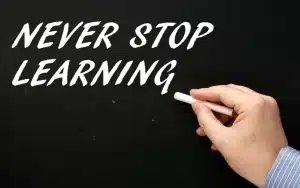
The Art of Business to Business Selling: Strategies for Success
In today’s competitive market, business to business selling (B2B) has become more sophisticated than ever. Unlike business-to-consumer (B2C) sales, which often focus on individual buyers and their emotions, B2B selling revolves around selling products or services from one business to another. This process requires a deep understanding of client needs, longer sales cycles, and the ability to build lasting relationships. In this blog post, we’ll explore the key strategies for succeeding in B2B sales.
1. Understanding the Buyer’s Journey
In B2B sales, the buyer’s journey is typically longer and more complex than in B2C. It’s essential to understand the different stages your prospects go through, from initial awareness to making a purchase decision. The three key stages of the B2B buyer’s journey are:
- Awareness: The buyer identifies a need or problem.
- Consideration: The buyer evaluates potential solutions and vendors.
- Decision: The buyer selects a solution and makes a purchase.
Understanding this journey helps you tailor your approach at each stage. For example, during the awareness stage, your focus should be on educating potential clients about their problem and positioning your product as a solution. In the consideration stage, your goal is to highlight the unique value your solution offers compared to competitors. Finally, in the decision stage, you should provide case studies, testimonials, and pricing details to help close the sale. When it comes decision we cover how to look for a Buying Signal and ask then ask for the business.
2. Building Strong Relationships
Business to Business selling is built on trust and long-term relationships. Unlike B2C transactions, where a customer might buy a product once and move on, B2B deals often involve ongoing collaboration. Building a strong relationship with your clients is key to not only closing the initial deal but also securing repeat business.
To build these relationships, it’s important to:
- Understand your client’s business: Know their industry, challenges, and goals. This will help you position your product or service as a valuable solution.
- Communicate effectively: Keep open lines of communication, listen to your client’s needs, and provide regular updates.
- Deliver on promises: Reliability is crucial in B2B relationships. If you promise a certain level of service, make sure you deliver it consistently.
3. Tailoring Your Sales Pitch
A one-size-fits-all approach rarely works in B2B sales. Each business has unique needs, and your sales pitch should be tailored accordingly. Start by conducting thorough research on the company you’re targeting. Understand their pain points, and be ready to explain how your solution can address them.
Your pitch should be data-driven and focused on ROI (Return on Investment). B2B buyers are typically more analytical than B2C consumers, so providing concrete examples of how your product can save time, reduce costs, or improve efficiency will resonate more effectively. We cover how to make an effective presentation here https://www.b2bsell.com/sales-presentation/ .
4. Leveraging Technology
Technology has revolutionised the way B2B sales are conducted. Customer Relationship Management (CRM) systems, for instance, allow sales teams to track interactions, manage leads, and streamline the sales process. Additionally, data analytics can provide insights into buyer behavior, helping you fine-tune your approach.
Social selling is another powerful tool in the B2B arsenal. By engaging with prospects on platforms like LinkedIn, you can build relationships, share valuable content, and establish yourself as an authority in your industry. This not only helps in lead generation but also in nurturing relationships throughout the sales cycle. We cover understanding Value Proposition here https://www.b2bsell.com/value-proposition/
5. Focusing on Value, Not Just Price
Price is an important factor in business to business selling, but it shouldn’t be the sole focus. Businesses are often willing to pay more for a solution that offers greater value. Instead of competing on price alone, emphasise the unique benefits your product or service provides.
Value can come in many forms, such as superior customer support, enhanced features, or a stronger reputation in the industry. Demonstrating the long-term benefits of your solution can help justify a higher price point and position your product as the best choice. For more on Focusing on Value
6. Continuous Improvement and Learning
The Business to Business Selling landscape is constantly evolving, with new technologies, trends, and challenges emerging regularly. To stay ahead, it’s important to continuously improve your skills and strategies. Attend industry conferences, participate in sales training, and keep up with the latest developments in your field.
Soliciting feedback from clients can also be incredibly valuable. Understanding what worked well in the sales process and where there were challenges can help you refine your approach for future prospects.
Conclusion
B2B selling is both an art and a science. It requires a deep understanding of your clients, the ability to build strong relationships, and the skills to tailor your approach to each unique situation. By focusing on these key strategies—understanding the buyer’s journey, building relationships, tailoring your pitch, leveraging technology, focusing on value, and committing to continuous improvement—you can enhance your success in the B2B sales arena.
Whether you’re new to B2B sales or looking to refine your approach, remember that at its core, B2B selling is about creating meaningful, lasting partnerships that benefit both parties. With the right strategies, you can turn prospects into long-term clients and drive sustained business growth. For another take a slightly different definition of Business to Business Selling see Investopedia’s post HERE






